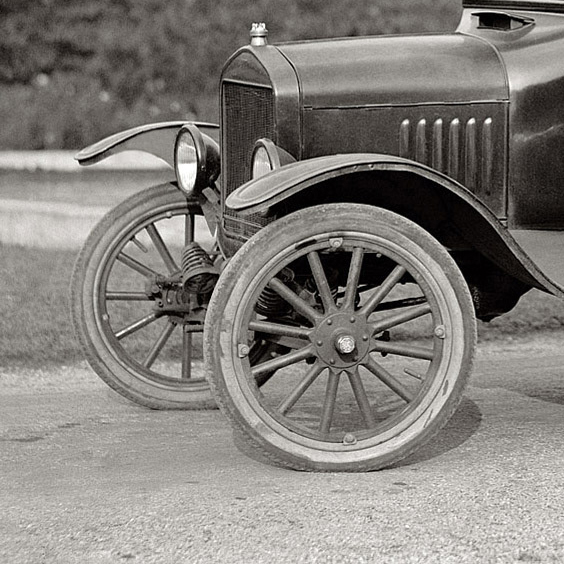origin
The indigenous peoples of the Amazonian jungle knew long before any Europeans about the water-repellent and elastic properties of the sap from the rubber tree.
to Europe
The Portuguese and Spanish conquerors brought this knowledge to Europe where experiments with the new material intensified as of the 18th century. Some results were eraser, raincoat and rubber boots.
1839
But rubber became actually ‘relevant’ only after vulcanisation was invented in 1839. This technique makes rubber last much longer and be much more elastic.
rubber boom
The rapidly increasing demand lead to a downright rubber boom, as well in Brazil as in tropical Africa. Especially the former Congo Free State, the Belgian king’s private colony, is known for the brutal exploitation of natives to produce rubber (Congo Horrors). Some estimate that in Congo one human died per 5 kg of rubber, that would be four people per tyre of a Model-T (first car put together on an assembly line). In the Amazon as well the rubber mania killed at least 30,000 people.
1876
Already in 1876 the Briton Henry Wickham smuggeld rubber tree seeds from Brazil to the British colonies in South and Southeast Asia. The Plantation there dominate the worlwide production of natural rubber to date.
1913/14
In 1913/4 rubber from plantations ‘overtook’ for the first time the volume of the rubber tapped in the jungle. Right from the beginning the automobile and tyre industry was the main buyer. But the reason for first surge of demand were about 7 million bicycles.
world wars
The world wars increased demand further (e.g. for gas masks), at the same time supply security was compromised. Therefore scientists intensified research to find synthetic alternatives.
1950s
In the late 1950s synthetic rubber ‘overtook’ natural rubber (production and trading volume).
today
Today approximately 60% of what communly is refered to as rubber is produced synthetically. A lot of products use a mixture of synthetic and natural rubber, but for some products natural rubber can’t be substitued because of technical requirements (e.g. for airplane tyres).
